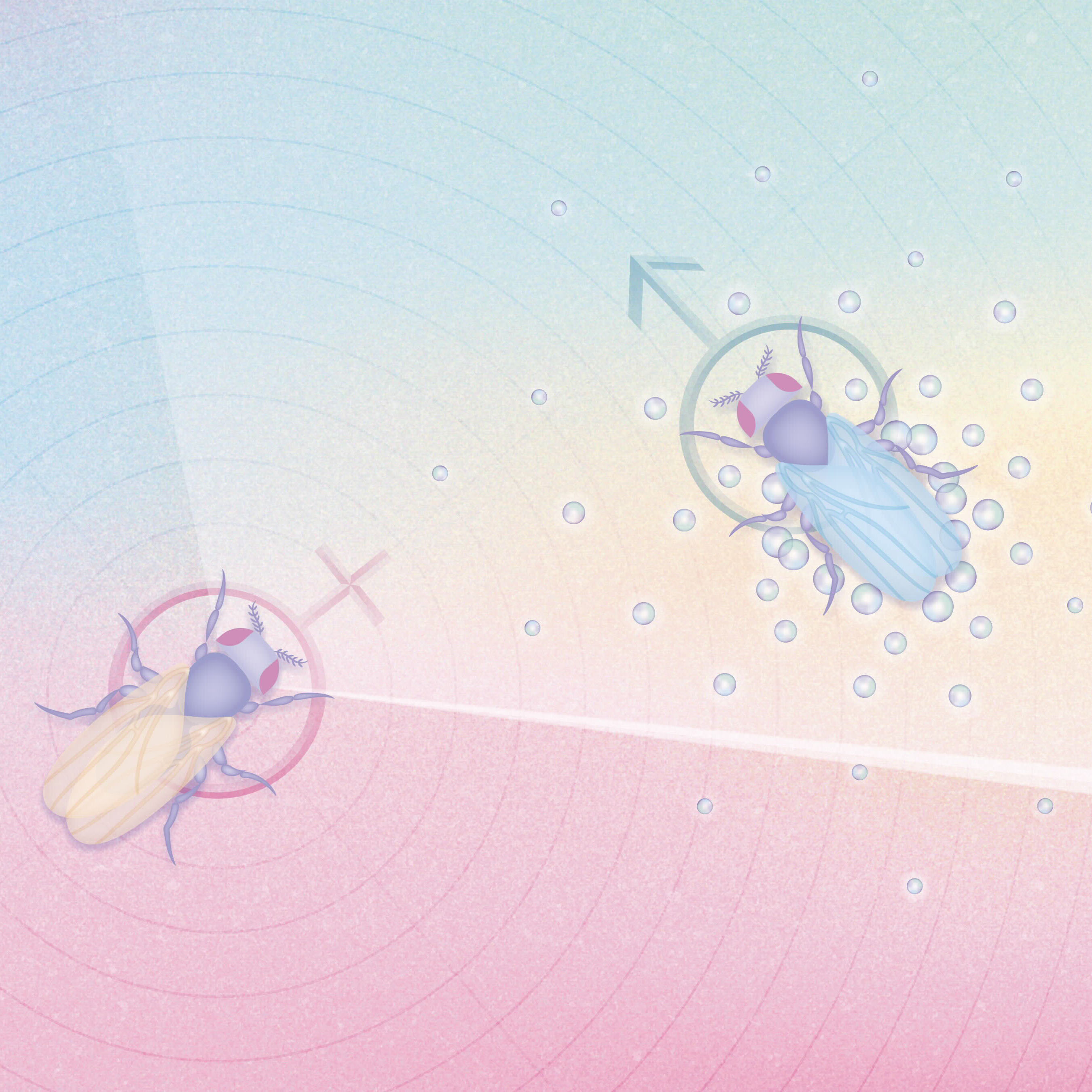25 May 2023
How animals use smell to determine the identity and position of other animals
Mechanistic insight into neural pathways of Drosophila reveals how smell encodes the identity and position of stimuli
25 May 2023
Mechanistic insight into neural pathways of Drosophila reveals how smell encodes the identity and position of stimuli

Many animals rely on smell to identify and locate objects in their surroundings and to respond appropriately. To investigate this phenomenon further, Greg Jefferis’ group in the LMB’s Neurobiology Division established a collaboration with the Behavior and Metabolism Lab, lead by Carlos Ribeiro, at the Champalimaud Foundation (CF) and the group of Drosophila Connectomics at Cambridge University and together studied Drosophila flies. These animals are known to release a pheromone, cis-vaccenyl acetate (cVA), which is sensed by a dedicated olfactory channel and acts as an aphrodisiac in females but promotes aggression in males. Dana Galili, a postdoc in Greg’s group, and István Taisz, a PhD student in the group, used this sex-based difference in pheromone response to determine the first mechanistic explanation of how smell can encode both the identity and the position of a stimulus.
Researchers studied the Drosophila brain at multiple levels, building circuit models to examine how different aspects of a sensory signal are separated by the brain. Their approach was guided by the recently published synaptic-resolution connectome (a wiring map of brain connections) of the Drosophila adult brain, and its analysis, spearheaded by members of Greg’s group.
Using genetically engineered flies, the group were able to test the hypotheses they derived from their wiring map. Fluorescent microscopy allowed them to record how specific neural cells responded to stimuli. They then identified which social behaviour these cells represented by changing the activity of the cells.
Examining how female flies use smell to determine stimuli location, the group found that flies are especially sensitive to differences in smell reaching both antennae – the fly’s nostrils – and can use this information to locate a male. Moreover, the researchers determined the mechanism whereby a single neuron increases the left-right contrast, allowing for an enhanced ability to localize the male’s angular direction precisely, despite the tiny spatial difference between antennae.
The group’s findings illustrate how a single sensation – the scent of a male – is broken down into different aspects within the brain, each encoded by a dedicated neural pathway. Their results provide a uniquely comprehensive description of how a single stimulus is decomposed by the brain at synaptic resolution, with a full diagram of connectivity and functionality. The brain’s ability to interpret the surrounding environment relies upon breaking down each stimulus into elemental components and assigning meanings to each of them.
For example, the speed of the male’s movement, its location in the space around the female, and the quality of the male as a potential mating partner are all computed separately in the brain, and each can lead to a different response. For instance, the pathway linked to male quality can provoke a female sexual response, whereas the pathway representing male movement does not.
From the connectome map, the Cambridge group had evidence that certain neural cells studied integrated taste information in addition to smell. “Notably, they found that simultaneous artificial activation of taste and smell neurons increases female receptivity. Through a series of experiments our group at the Champalimaud Foundation then demonstrated that the identified taste neurons exhibited strong sensitivity to stimulation with male flies' genitals.” explains postdoctoral researcher Daniel Münch. “These findings provide further support for the theory formulated by our collaborators at Cambridge based on the connectome map”, concludes principal investigator Carlos Ribeiro.
This advanced understanding of the neural response to a single sensory stimulus contributes to a much wider scientific endeavor to fully explain how the healthy brain functions. This is necessary to better understand what goes wrong in diseased or injured brains. Looking ahead, the approach used (by Dana and István - deleted) will serve as a reference point for future work in species with larger brains, which is also a focus for future connectome datasets.
